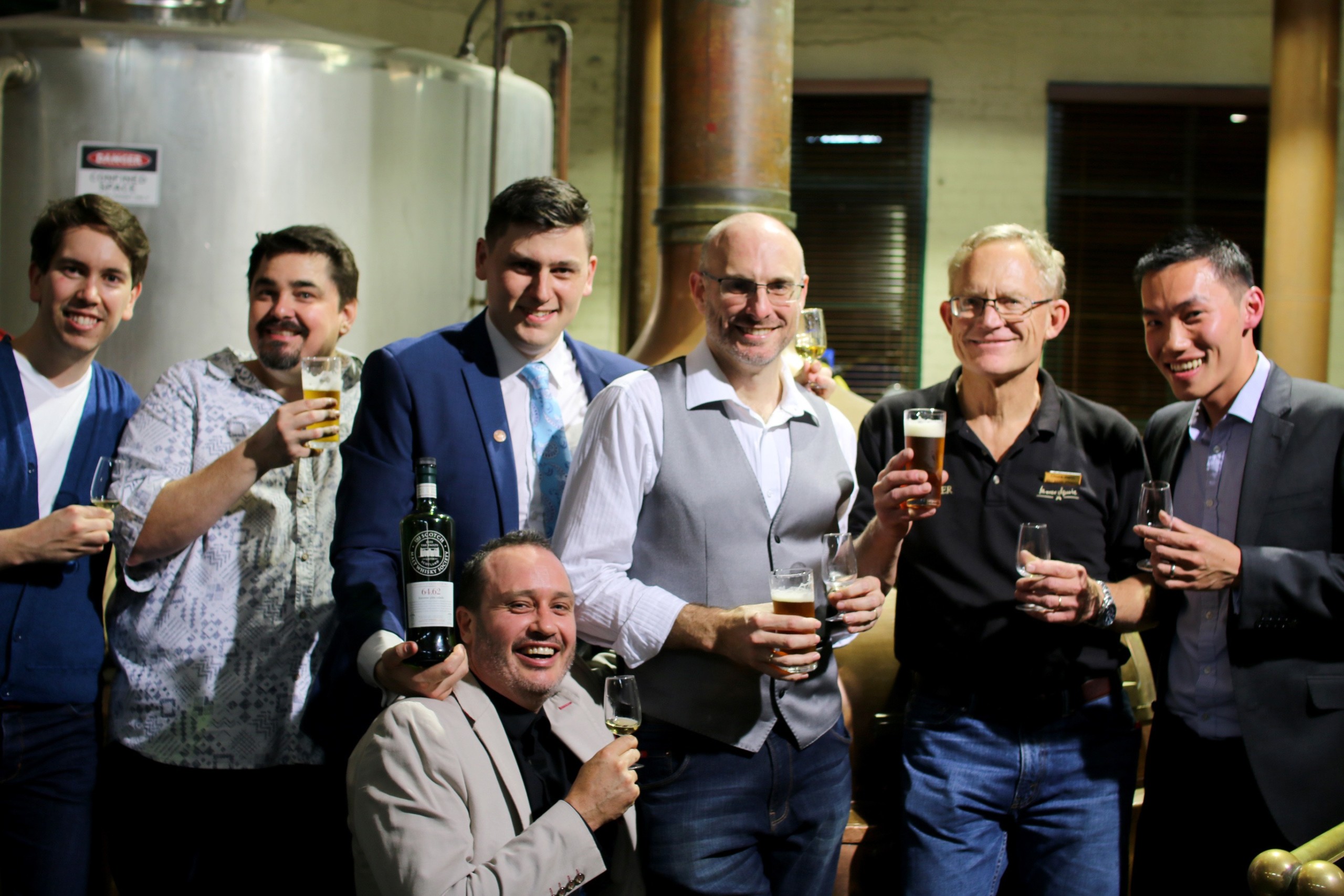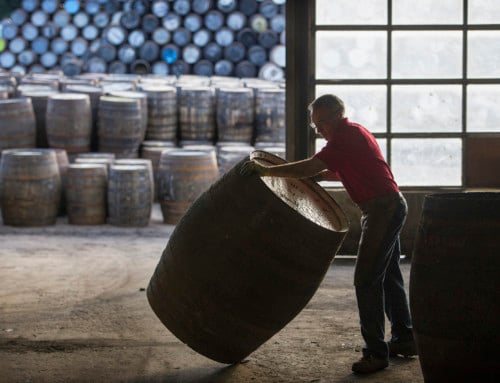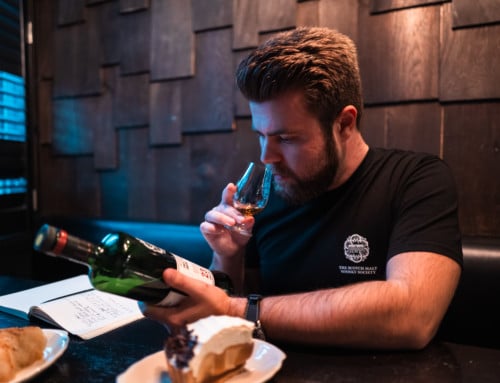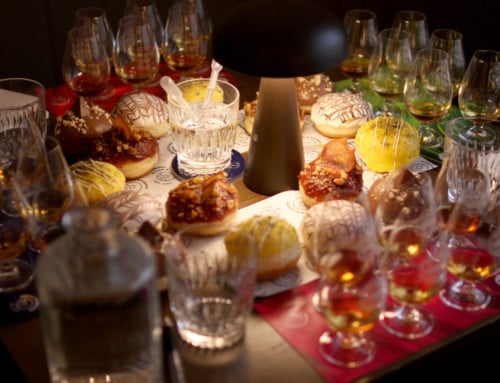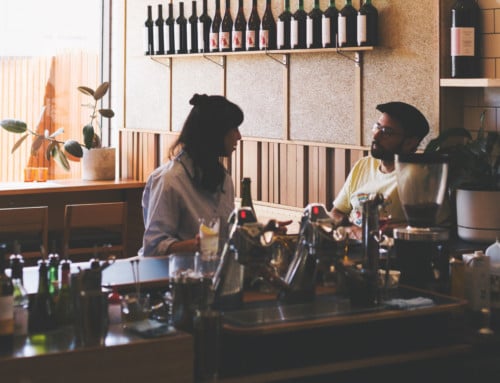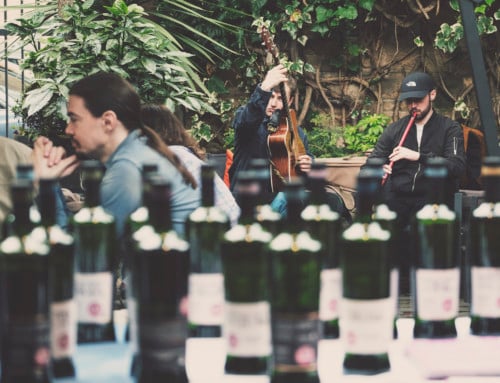October Outturn 2022 Article
Having previously written specific anniversary pieces to mark the Society’s 10th and 15th birthdays in Australia, it was tempting to do a bit of a “copy and paste” effort when sitting down to pen something for our 20th birthday. But anything that one wrote in the past is a function of its time and was shaped by the mood, the zeitgeist, and the facts current in the timeframe in which those words were conceived.
Much has happened in the five years since I wrote a piece for our 15th birthday, and certainly much has changed since our 10th birthday in 2012. And, needless to say, it’s an almost unrecognisable world (in the sense of the whisky landscape) from our branch’s humble beginnings in 2002. For these reasons, me re-iterating previously-written paragraphs, or even simply leaning on them to pen this column seems inappropriate. Too much has changed. So for this time around, it seems appropriate for me to therefore focus precisely on that: Change.
Think back on two decades of change in your own life. If you’re in your thirties, think back to your life when you were a teenager. If you’re in your fifties, think back to your years in your thirties. And so on. You get the idea. Times were different, right? Regardless of your actual vintage, think back to the world as you recall it in 2002….
For newer members of the Society — and certainly for younger members of the Society — it is difficult to appreciate what the whisky scene or landscape was like in Australia in 2002. Malt whisky was still a relatively niche product enjoyed largely just by enthusiasts. Perhaps more critically, cask-strength, single-cask whisky was virtually unheard of in this country. E-commerce was not a thing; smartphones didn’t exist (nor did social media as we know it today), and websites were very basic. Information about whisky was chiefly sourced through just one or two books; whisky was generally marketed and promoted through printed-media advertising and — if you were lucky — at small in-store tasting events. Whisky bars, as we know them today, did not exist. (Although one or two pubs and hotels had a decent selection).
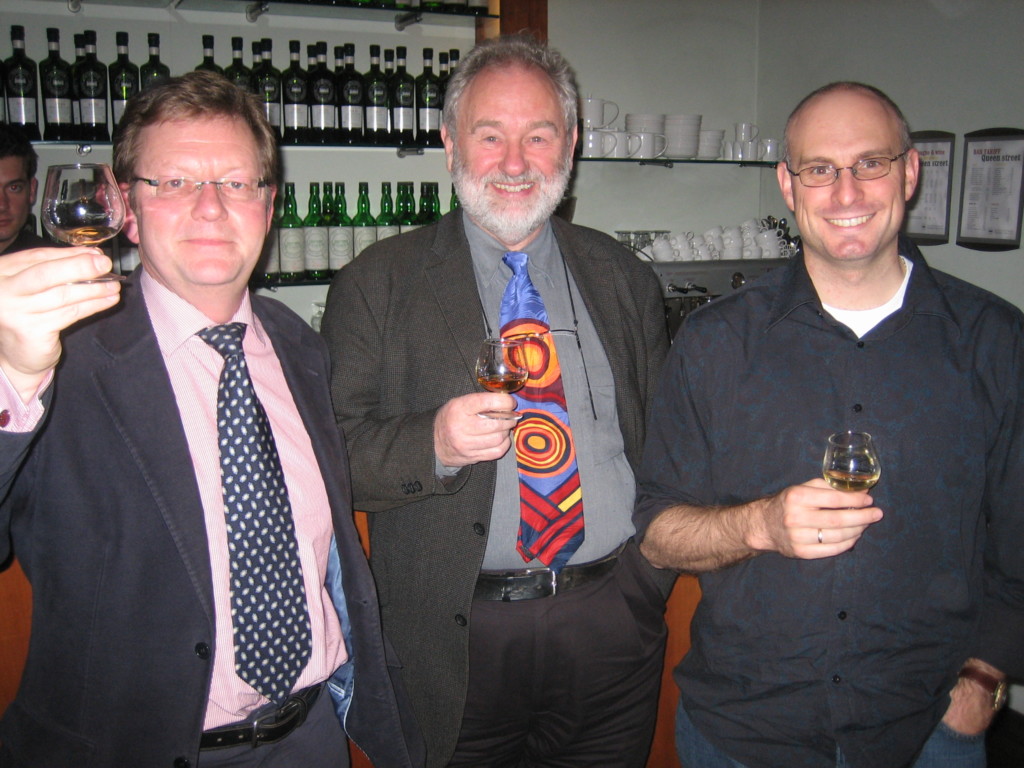
Chris, Andre and Andrew.
And so it was into that world that the Society launched in Australia, in Sydney, with three initial, introductory tastings held on three consecutive Tuesday nights in November, 2002. I attended the second of those three initial tastings. Much of the early promotion and noise about the SMWS being birthed was circulated amongst the influence circles of our founders, John Rourke and Andre Tammes. This was chiefly to the likes of the Wine and Food Society and similar culinary interest entities, and, to a lesser extent, Scottish interest groups such as clan societies. It would not be unfair to observe that early patronage of the Society was by an older demographic, and almost exclusively male.
The early challenges
The challenges for the Society were steep and stark from the outset. The operation was ridiculously small and enjoyed zero economies of scale. In fact, quite the opposite. Our two founders were involved in full-time work and often overseas. All aspects of operations were thus outsourced to appropriate third-party entities: Printing, warehousing and distribution, shipping imports and customs, printing and mailouts, and also the website. A professional business centre was engaged to answer the phone number and make it sound like the Society actually had an office and admin staff. (In truth, all calls were simply patched through to John or Andre, or the message was taken and passed on). As a result of this structure, running costs were high across numerous avenues, which obviously translated to significantly higher bottle prices than what whisky drinkers in Australia were largely accustomed to. And that’s before we even came to alcohol excise.
Remember — cask-strength whisky was virtually unknown in Australia. Society whiskies, bottled around 60% ABV and thus attracting 50% more tax, were directly compared to commercially-available whisky that was almost exclusively 40% ABV, or occasionally 43%. Such was the small volume of stock being brought in with each shipment, shipping by sea-freight was impractical. All stock came to Australia via airfreight — instantly adding further to each bottle’s eventual members’ price.
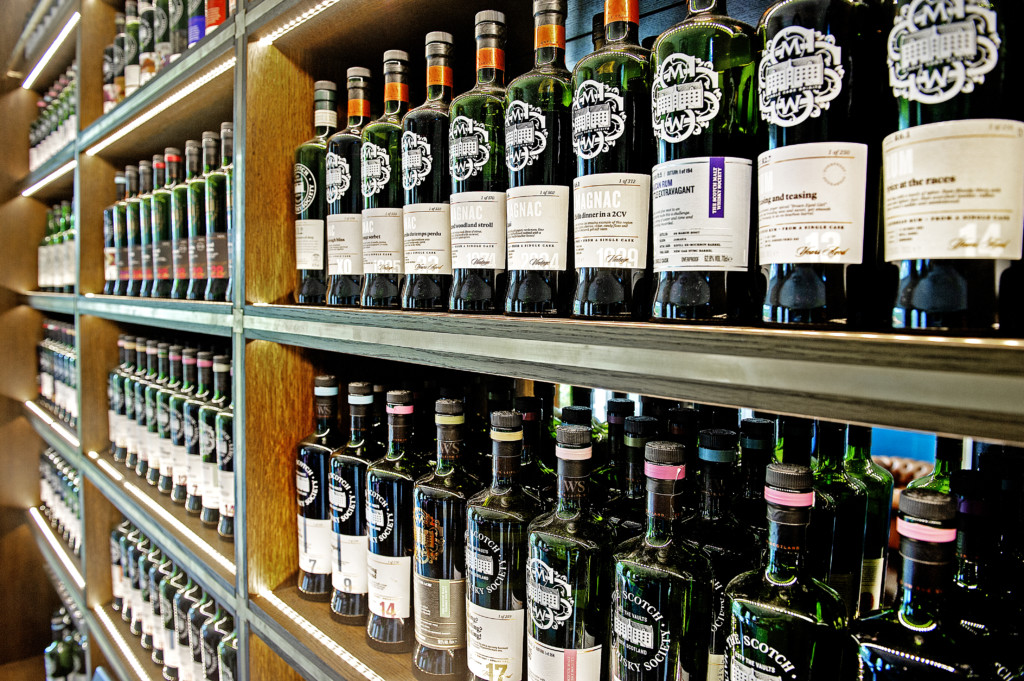
As such, for any SMWS tasting event in those early years, a significant portion of the night had to be spent simply explaining the product. Time had to be spent explaining what “cask strength” meant and that there was actually “more” whisky in the bottle, which justified the higher price tag. Explaining the significance of a “single cask”, and why an SMWS bottling of an ex-bourbon cask from Distillery 24 would taste so completely different to the heavily sherried 12yo Macallan the audience was used to tasting at home. Explaining why 3.67 tasted completely different to 3.68. Actually, simply explaining what “3” meant, and what “68” meant. (Okay, so perhaps that’s one thing that hasn’t changed). Explaining what non-chill filtered meant, and explaining the significance of our whiskies not being artificially coloured, which was the case for 99% of whisky available in Australia.
Unlike anything that had been seen before
Society whiskies were unique. With one, possibly two exceptions (I’m thinking Glenfarclas 105 and the newly available but hard-to-find Aberlour a’Bunadh), SMWS whiskies were unlike anything previously seen commercially in the country. To put some of the above into context here, consider that in 2002, the commercially available, official bottling of Macallan 12yo retailed in Australia for around $65. (Consider also that, in 2002, consumers worldwide only knew Macallan to be a 100% sherry-matured whisky. Expressions and releases that made use of ex-bourbon casks with names like Fine Oak or Double Wood or Select Oak, etc, would not be known and released commercially until several years later). By comparison, the aforementioned SMWS ex-bourbon cask — Cask 24.31, to be precise — appeared on the Australian branch’s first Bottling List for $170. Thus, it was usually a tough gig trying to convince attendees at tastings that the Society’s offerings provided good value — at least in terms of dollars. Instead, we relied on taste. And it was chiefly through taste – that is, by offering something that simply tasted significantly better than the alternatives — that our branch slowly made inroads.
Notwithstanding the generally higher price tags that often needed explanation, what the Society could offer — in spades — was access to a plethora of distilleries that were usually unknown/unheard of, and certainly not otherwise available in this country. In the early 2000s, even the best-stocked liquor store would have, at best, no more than 10–15 different distilleries/brands on its shelves. And, as was the practice of the day, many brands simply offered one expression, typically a 10yo or 12yo. Some of the bigger brands might offer a 12yo, 15yo, and, say, an 18yo or 21yo. It was through the Society that Australian whisky drinkers could largely access non-standard age statements, such as a 6yo Ardbeg, a 9yo Glentauchers, or a 23yo Glenugie.
The Society was a big beneficiary of the so-called “whisky loch” that resulted from the industry’s shocking downturn in the 1980s which left unwanted casks maturing for years into the early 2000s. Rare and well-aged malts were regular features on each Australian Bottling List (the name “Outturn” for our bottling list or catalogue would not be applied until late 2010), and for prices that are near unthinkable in the context of today’s expensive landscape. (Fancy a 36yo, sherry butt-matured Longmorn from 1968 for less than $350? Or a 40yo Glenfarclas from 1965 for $385? How about a Brora for $240? A Glen Albyn? A Dallas Dhu? How about a Glencraig? We featured casks from almost all the old/silent/closed distilleries that you now only read about in the books).
Genteel times
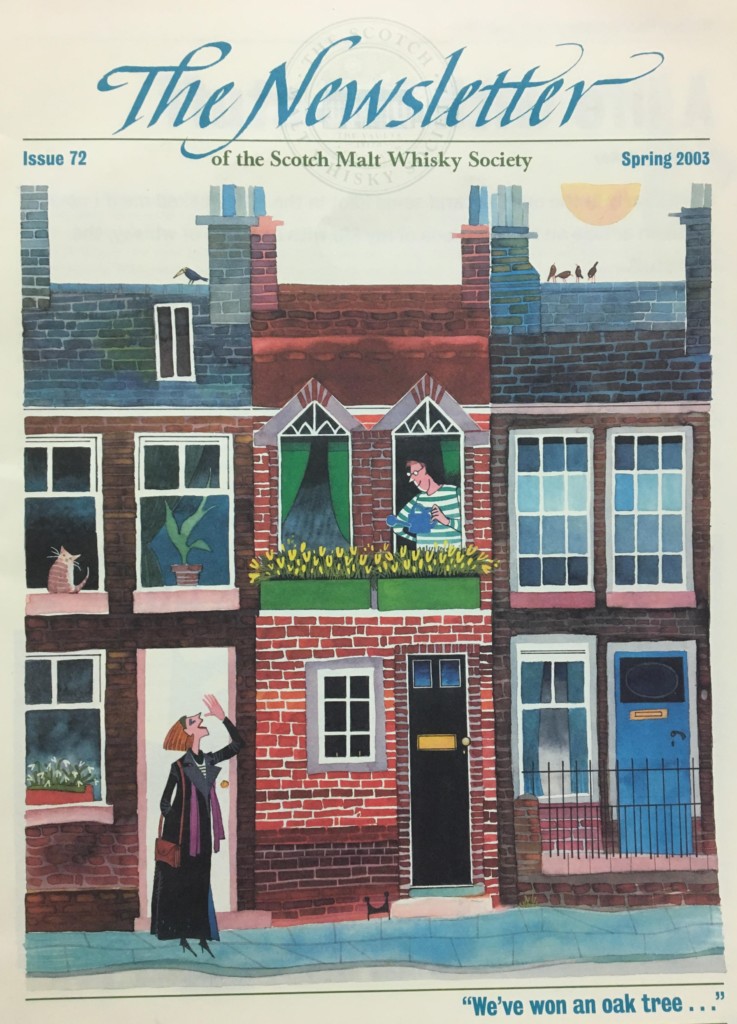
Early Society newsletter — 2003
So how else was the 2002 version and the early years of the SMWS in Australia different to what members know today? Member buying patterns were very different back then, and it was rare for members to buy “off spec” when the Bottling List arrived in their letterbox every three months. Rather, members were accustomed to trying the whiskies first at one of our tasting events, and then faxing through their orders the following day! Ordering online through our website wasn’t possible until 2007, and members generally placed orders either by phoning the office directly, or faxing in order forms. Or they would hand in an order form to their State Manager at the end of a tasting event. They were genteel times, compared to the frantic rush we sometimes now see on the first Friday of each month.
Unfiltered would not be launched as an international hardcopy magazine until 2008. For local publications, we used
to actually produce our own, separate, A4-sized, content-rich magazine every three months to accompany the Bottling List. (All content written and produced locally here). The last such quarterly magazine and bottling list went out in the Spring of 2014, and Outturn became a monthly publication from November 2014 onwards.
Another change — one that has evolved gradually, rather than a sudden switch — has simply been the size and scale of our branch and our operations. Needless to say, there are more members in 2022 than the base of zero that we started with in 2002, and we’re bringing in more bottles these days to quench our members’ thirst. The first shipment I was responsible for as Cellarmaster was at the end of 2005, and it had 120 bottles onboard. In contrast, our first shipment to leave Scotland this year had 3,107 bottles onboard!
Shifting staff
If you think to your own workplace environment and work colleagues, my guess is that you’ve seen a significant number of changes in personnel as staff come and go — particularly over a time span of 20 years. In fact, you yourself may well have changed jobs numerous times since 2002? We have not been immune to changes in personnel over two decades, but I’m particularly proud of the longevity of our State Managers and the years we’ve collectively put in. NSW has had just two State Managers in all this time; as has South Australia, Queensland, the ACT, and Wollongong! And the terms of the current incumbents in those five regions range between eight and seventeen years!
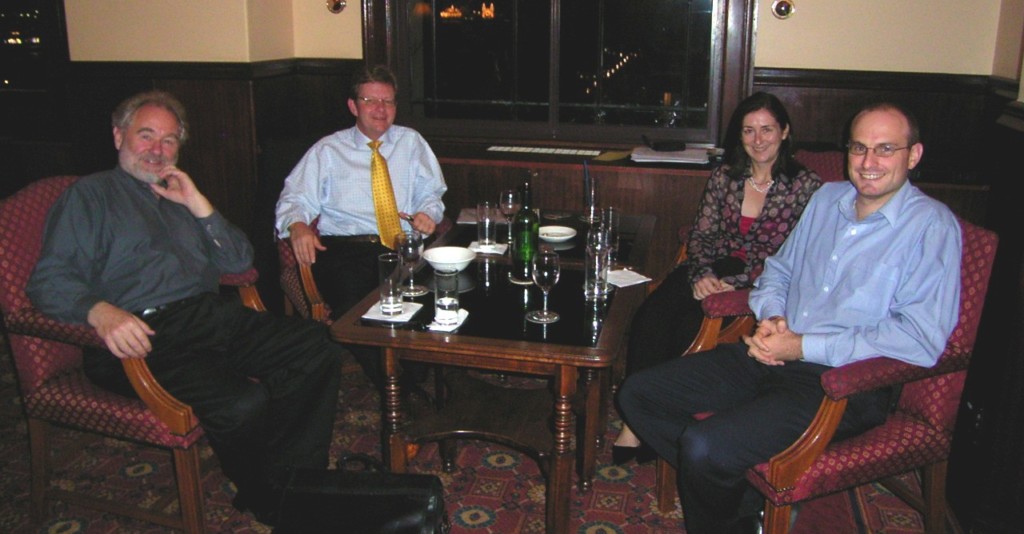
The Australia Branch’s first board meeting. Pictured (left to right): Andre Tammes, Chris Barnes, Suzy Tawse, Andrew Derbidge — June 30th, 2006.
And special mention must be made of Suzy Tawse, who has headed up our office for just shy of 17 years and kept this engine running with a devotion, efficiency, and aptitude that is unparalleled. Suzy became our first full-time employee in January, 2006. Today, we have three full-time employees and two part-time employees. Whilst our State Managers are all essentially “brand ambassadors”, it’s worth also recalling that our branch did not have a dedicated, full-time brand ambassador until 2015! And whilst the first incarnation of that role was short-lived, Matt Bailey joined the Society’s staff in that capacity in 2016, giving our branch the full-time drive that myself and Andre Tammes could not fully push as we juggled full-time work in other industries.
Changes in social media’s features and behaviour, vlogging, livestreams, and virtual tastings have also shaped and evolved how our branch now operates and what we can offer. Our branch was truly innovative and pioneering in how we ran tasting events and what we offered in the early 2000s; I would modestly suggest that innovative spirit has stayed with us in recent times — our branch was doing livestreams and virtual tastings long before COVID brought “Zoom” into the current vernacular.
Of course, for some, all the above is merely nostalgia or perhaps a self-indulgent account of history. For many readers and newer members, one might justifiably react with, “So what? Times have changed”. Despite our industry’s many claims and statements about “tradition” or “centuries-old methods”, whisky has certainly not stayed still. It is a continuously evolving force. We, the Society, are simply one small part of that force, and we have evolved in kind. Further evolution and change are inevitable. But in order to appreciate where you’re going, you need to appreciate where you’ve been. Personally, I like where we’ve been. It’s been a bloody tasty journey!
This article features in the October 2022 Outturn — available to read Friday the 30th of September midday AEST; bottles will be available to purchase on Friday the 7th of October midday AEDT exclusively to members of The Scotch Malt Whisky Society. Not a member? Click here to learn more about the world’s most colourful whisky club.



